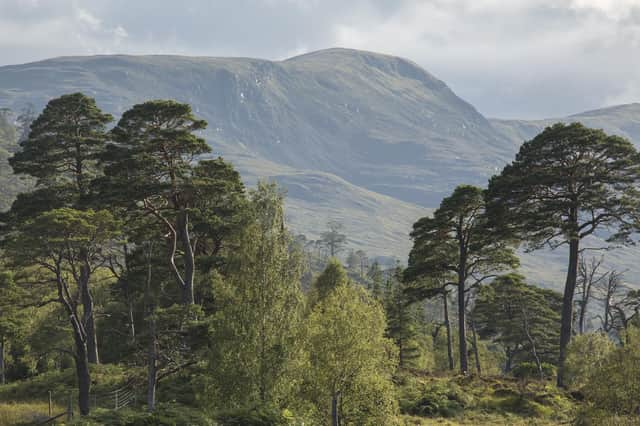Highland bandits and a world of vagabonds, thieves, murder and torture


Bandits were active all over Scotland for hundreds of year with organised robbery , and in particular cattle lifting, regarded as a right of passage for young men on the road to manhood, said Dr Allan Kennedy, of Dundee University.
It was also a way of boosting the income of your people at the expense of your rivals, he added.
Advertisement
Hide AdAdvertisement
Hide Ad“The golden age of this real-world banditry in Scotland was the late-seventeenth and early-eighteenth centuries, with most of it concentrated in Scotland’s very own Wild West, the Highlands,” Dr Kennedy wrote in an earlier article for History Scotland magazine.
By the mid 17’th Century, the big threat of “predatory robbery” came not from a rival clan but from lone men who lacked jobs and landlords and who survived on stealing livestock which they could sell on.
Such men tended to “drift together” in groups with their activities becoming all the more threatening.
“Larger groups could then begin to diversify, moving from cattle-rustling into extortion blackmail and highway robbery,” Dr Kennedy, the consultant editor of History Scotland magazine said.
Clan elites were used to try and control this new wave of criminality with attempts to bring down the bandits a key concern for tCharles II, James VII, William and Mary and Queen Anne, he added.
A judicial commission for the Highlands was also set up, but banditry persisted.
Dr Kennedy said a peak of bandit activity was recorded around 1660 with political and economic changes brought by the end of the Cromwellian regime, the restoration of Charles II and the second Anglo-Dutch war possibly drawing some men into a life of crime.
Feared figures of the day included Calum oig MacGregor, of Menteith, a notorious ‘sorner’ who extorted free lodgings under the threat of violence.
Advertisement
Hide AdAdvertisement
Hide AdHe was also ostracized from his home community of Callendar for committing incest.
Donald MacDonald, who also went by the name Halket Stirk, or streaked or spotted bullock, from Perthshire was regarded as the King of the cattle thieves.
However, no one reached the same level of notoriety as the Mackintosh-MacGregor gang, the historian said.
Lachlan Mackintosh and Patrick Roy MacGregor operated this gang on the eastern fringes of the Highlands, around Morary and Speyside, and worked with “brazen confidence”.
In summer 1665, Mackintosh launched a major cattle-lifting raid against John Lyon of Muiresk, a lair at Balchirie in old Banffshire, when he and around 25 armed men rounded up 60 oxen and 17 cows.
Tenants gave chase to the gang in an attempt to retrieve some of the animals but many were badly injured after the bandits turned on their pursuers.
Mackintosh was declared an outlaw and fugitive after he failed to appear at court in Edinburgh following the robbery and a manhunt was launched.
Four months after the raid, he was captured and then executed in Edinburgh in January 1666.
Advertisement
Hide AdAdvertisement
Hide AdLeadership of the gang then passed to MacGregor, who launched a “personal vendetta” against Muiresk given his pursuit of justice against those who had taken part in the raid alongside Mackintosh
What followed was a cold, barborous attempt by the new gang leader to assert his authority.
MacGregor and around 20 men broke into Muiresk’s barn – knowing that he and his son were at home – removed sheaves of corn and piled them around the house, dusting them with gunpowder.
“They then set them on fire. As the unfortunate residents awoke, choking on the smoke and quailing from the flames they rushed outside, only to find themselves confronted by MacGregor’s firearm-wielding gang.
“Muiresk, his son and several of their servants were taken prisoner,” Dr Kennedy said.
The servants were released but Muiresk and his son were taken deep into the country, stripped of money and clothes and starved of food. After four days, both men were killed.
Their bodies were found, naked a pitted with stab and gunshot wounds, lying on the hills outside Abernethy, around 16 miles from their home where they were captured.
MacGregor and his men were unrelentless in the aftermath of the double murder.
Advertisement
Hide AdAdvertisement
Hide Ad“For nearly a year, they rampaged around the north-east in an orgy of violence and robbery,” Dr Kennedy said.
In February 1667, MacGregor unashamedly marched into the town of Keith, led by a piper, in an attempt to extort money from its residents.
With around 30 or 40 men, he took residence in an alehouse but as he held court, the townsfolk began mobolising against him. At 9pm as they left the inn, the gang were set upon.
MacGregor was badly injured and fled into the countryside with his men. There, they were captured and quickly removed to Edinburgh to answer for the heinous crimes.
There, the gang leader was tortured using the ‘Boot’, Dr Kennedy said.
“This was an ordeal that involved tightly encasing the lower leg in a metal sheath and then hammering in a series of wedges, slowly – and agonisingly – crushing the leg,” the historian added.
A confession followed and it was recommended to the Justice General that, if convicted, MacGregor should have his right hand cut off before being put to death.
Found guilty, along with his accomplice Patrick Drummond, the executions were delayed amid rumours that the gang operated under the patronage of powerful individuals in the North East.
Advertisement
Hide AdAdvertisement
Hide AdThe exections of the two men – and two more gang members – went ahead on May 13 1668.
Declarations were given that their crimes had been committed under the instruction of Charles Gordon, 1st Earl of Aboyne, with two other laids accused of benefitting from the gang’s activities.
No direction action was taken against these men, Dr Kennedy said.
-Dr Kennedy’s original article on Highland bandits earlier appeared in History Scotland magazine